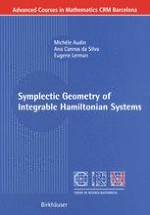Among all the Hamiltonian systems, the integrable ones have special geometric properties; in particular, their solutions are very regular and quasi-periodic. The quasi-periodicity of the solutions of an integrable system is a result of the fact that the system is invariant under a (semi-global) torus action. It is thus natural to investigate the symplectic manifolds that can be endowed with a (global) torus action. This leads to symplectic toric manifolds (Part B of this book). Physics makes a surprising come-back in Part A: to describe Mirror Symmetry, one looks for a special kind of Lagrangian submanifolds and integrable systems, the special Lagrangians. Furthermore, integrable Hamiltonian systems on punctured cotangent bundles are a starting point for the study of contact toric manifolds (Part C of this book).
